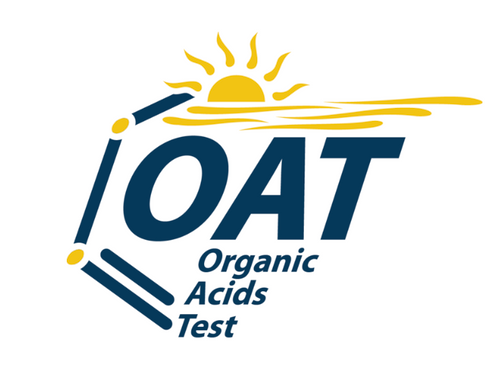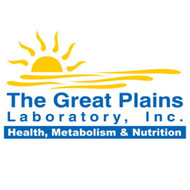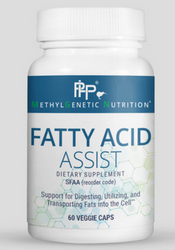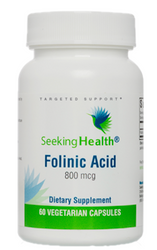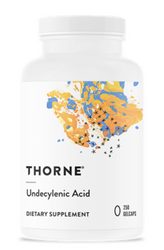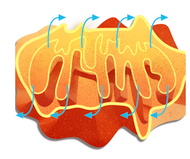Organic Acids Test - Candida Plan LLC
- Home
- Genetic Nutritional Testing
- Organic Acids Test
Categories
Categories
Brands
Brands
Organic Acids Test
Product Description
The Organic Acids Test (OAT) helps to clarify some of the findings of the Functional Genomic testing.
It provides an accurate evaluation of intestinal yeast and bacteria. Abnormally high levels of these microorganisms can cause or worsen behavior disorders, hyperactivity, movement disorders, fatigue and immune function. Many people with chronic illnesses and neurological disorders often excrete several abnormal organic acids. The cause of these high levels could include: oral antibiotic use, high sugar diets, immune deficiencies, and genetic factors.
If abnormalities are detected using the OAT, treatments can include supplements, such as vitamins and antioxidants, or dietary modification. Upon treatment, patients and practitioners have reported significant improvement such as decreased fatigue, regular bowel function, increased energy and alertness, increased concentration, improved verbal skills, less hyperactivity, and decreased abdominal pain. The OAT is strongly recommended as the initial screening test.
U.S. Patent # 5,686,311 for specific OAT compounds
Certain uses of the compounds arabinose, citramalic, tartaric, 3-oxoglutaric, carboxycitric, 3,4-dihydroxyphenylpropionic (DHPPA), and 3-(3-hydroxyphenyl)-3-hydroxypropionic (HPHPA) acids in their application to autism in the Organic Acids Test and Microbial Organic Acids Test are protected by USA patent 5,686,311 granted November 11, 1997.
New Markers
The new and improved OAT has increased the number of tested compounds to 70 and two new ratios have been added. Descriptions of the new markers are listed below:
4-Cresol Marker for Bacteria Including Selected Clostridia
Indicates a possible overgrowth of intestinal bacteria that are specific p-cresol producers including selected Clostridia. 4-Cresol is a phenolic product poorly metabolized in children with autism. High-potency multi-strain probiotics may help rebalance GI flora.
Tricarballylic Acid Marker for Exposure to Certain Fungal Contamination in Foods
A chemical by-product released from fumonisins during passage through the gastrointestinal tract. Fumonisins are fungal toxins produced primarily by F. verticillioides. Elevated levels can be caused by the intake of corn or corn-based food contaminated with fumonisins.
Quinolinic Acid Marker for Inflammation and Neurotoxicity
This acid derived from the amino acid tryptophan and can be neurotoxic at high levels. Quinolinic acid can over stimulate nerve cells, causing the cells to die. Brain toxicity due to this acid has been implicated in Alzheimers disease, autism, Huntingtons disease, stroke, dementia, depression, HIV-associated dementia, and schizophrenia.
Inorganic Phosphate Marker for Bone Function/Vitamin D Deficiency
Low phosphate is associated with thyroid disorders, low nutritional phosphate intake, and vitamin D deficiency.
4-Hydroxybenzoic Acid Marker for Exposure to Parabens
This acid is a metabolite of methylparaben, an anti-fungal and a popular preservative added to food and cosmetics. Parabens may be linked to mitochondrial failure resulting in chronic fatigue. Hydroxybenzoic acids can also be produced from microbial metabolism of polyphenols in the diet. Parabens have been found at high levels in breast cancer samples, but a definitive relationship with breast cancer has not been demonstrated.
4-Hydroxyhippuric Acid Marker for Exposure to Parabens
4-Hydroxyhippuic, like 4-hydroxybenzoic acid, is a metabolite of methylparaben. Higher levels of this compound can result from eating fruits rich in anthocyanins, flavonols, and hydroxycinnamates that are metabolized by gastrointestinal bacteria.
Malic Acid Marker for Mitochondrial Dysfunction
When malic acid is elevated simultaneously with citric, fumaric, and alpha-ketoglutaric acids, it may cause Cytochrome C Oxidase Deficiency, a metabolic disorder disrupting energy production.
DHPPA Marker for Beneficial Bacteria
Harmless or beneficial bacteria mediate the breakdown of chlorogenic acid to 3,4-dihydroxyphenylpropionic acid (DHPPA). High values of DHPPA are associated with increased amounts of bacteria in the gastrointestinal tract.
N-acetylcysteine (NAC) Marker for Glutathione Precursor & Chelating Agent
NAC is a powerful antioxidant that increases glutathione reserves in the body. Glutathione is a crucial antioxidant and detoxification agent produced in the body. NAC reduces the toxicity of drugs like acetaminophen (Tylenol) and protects against poisoning by mercury and other heavy metals.
Quinolinic Acid/5-HIAA Ratio Marker for Neurotoxicity and Inflammation
A high ratio of quinolinic acid to the metabolite 5-hydoxyindole-acetic acid indicates excessive inflammation. High levels of these markers could be due to recurrent infections, immune overstimulation, high tryptophan intake, excessive adrenal production of cortisol, and frequent exposure to phthalates (chemical used in plastics and many household items).
 Loading... Please wait...
Loading... Please wait... 
